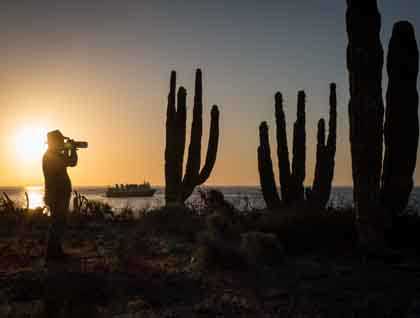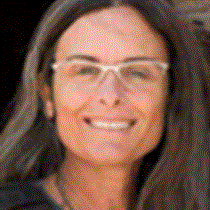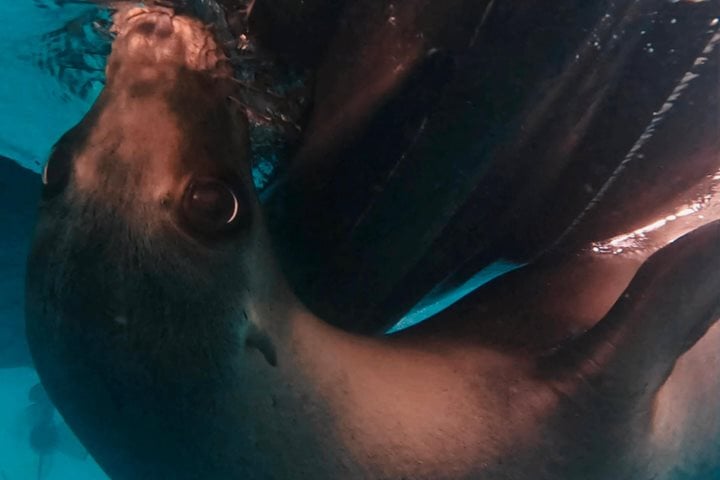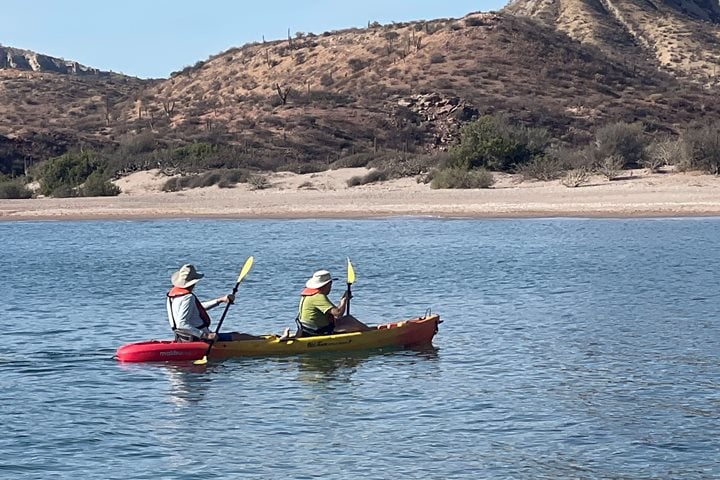Before sunrise, a couple small boats headed to shore for a pre-breakfast exploration of Isla San Esteban. We landed shortly before the richly glowing orb rose from the horizon. Moving gingerly around the yellow-footed gulls sitting on eggs in kelp-lined nests along the rocky shoreline, we scampered up to a plateau above the landing site. There were numerous angles to discover for photo opportunities with cactus silhouetted by the beautiful first light.
From the ship, a lone humpback whale was spotted and sea lions randomly popped their heads up curious and playful, with occasional quick leaps. After breakfast, everyone went to shore for hikes in this amazing arroyo. While this arroyo is filled with a great variety of cactus, plant, and bird life, the subjects many of us set out in search of were the endemic pinto chuckwalla lizards and the spiny-tail iguanas. Iguanas both large and small were in great supply, posing for photographs as our shutters whirred away. The chuckwallas were a much greater challenge to find, skittering across the arroyo in advance of our footsteps, ducking back into their rocky holes. The desert was green with life. Flowering vines decorated the mesquite bushes, cholla, and pitaya agria cactus.
We were back aboard for lunch and cruising south with following seas. We found the humpback again and enjoyed watching its frequent surfacings ending with its flukes raised as it dove deeper into the sea. Now and then small groups of bottlenose dolphins came by. As we approached Isla San Pedro Martir, the number of seabirds flying around us increased with brown boobies, blue-footed boobies, brown pelicans, and Heermann’s gulls moving to and from the island.
The National Geographic Sea Bird set anchor in the lee of San Pedro Martir and we headed out for small boat cruises along the shoreline. The barks of sea lions echoed in the natural amphitheaters along the coast. Younger pups played in the water around us, flying through the water below us, abruptly turning, leaping, then stopping to sneak peeks towards us with heads stretched high above the water.
Isla San Pedro Martir is a wonderful bird island, nicknamed the “Pearl Island” for its incredible guano frosting. The steep, rocky slopes are interrupted by huge forests of cardon cactus and stone walls that were used in the historic collection of guano in the 1800’s. All around the island we saw a great variety of birds including Brandt’s cormorants, high-flying red-billed tropicbirds, and groups of Pacific loons gathering in advance of their migration north. Brown boobies perched on the tiniest bits of ledges well above the waterline but below the guano-covered slopes favored by the blue-footed boobies.
We returned to the ship in the late light after another terrific expedition day.







